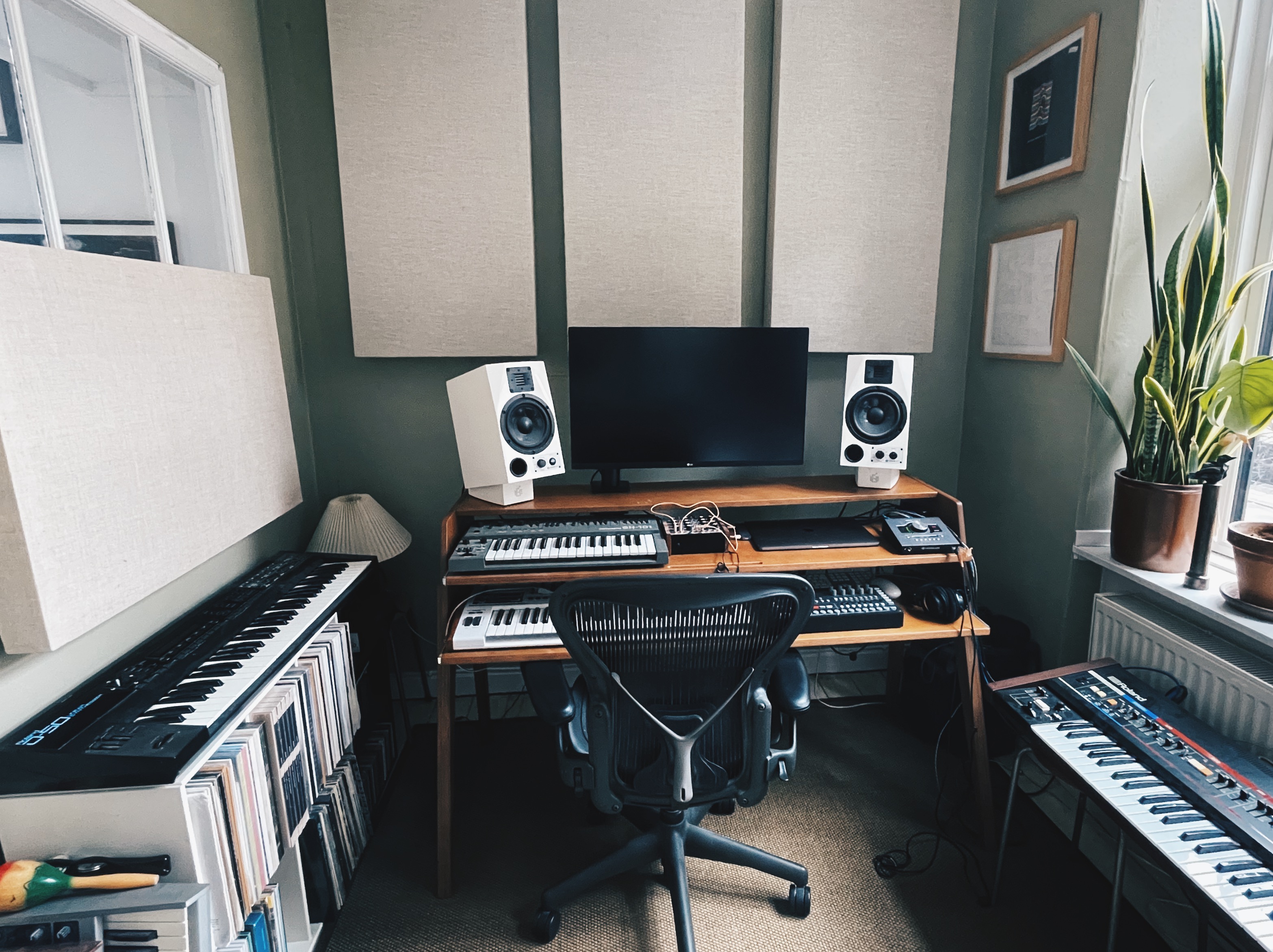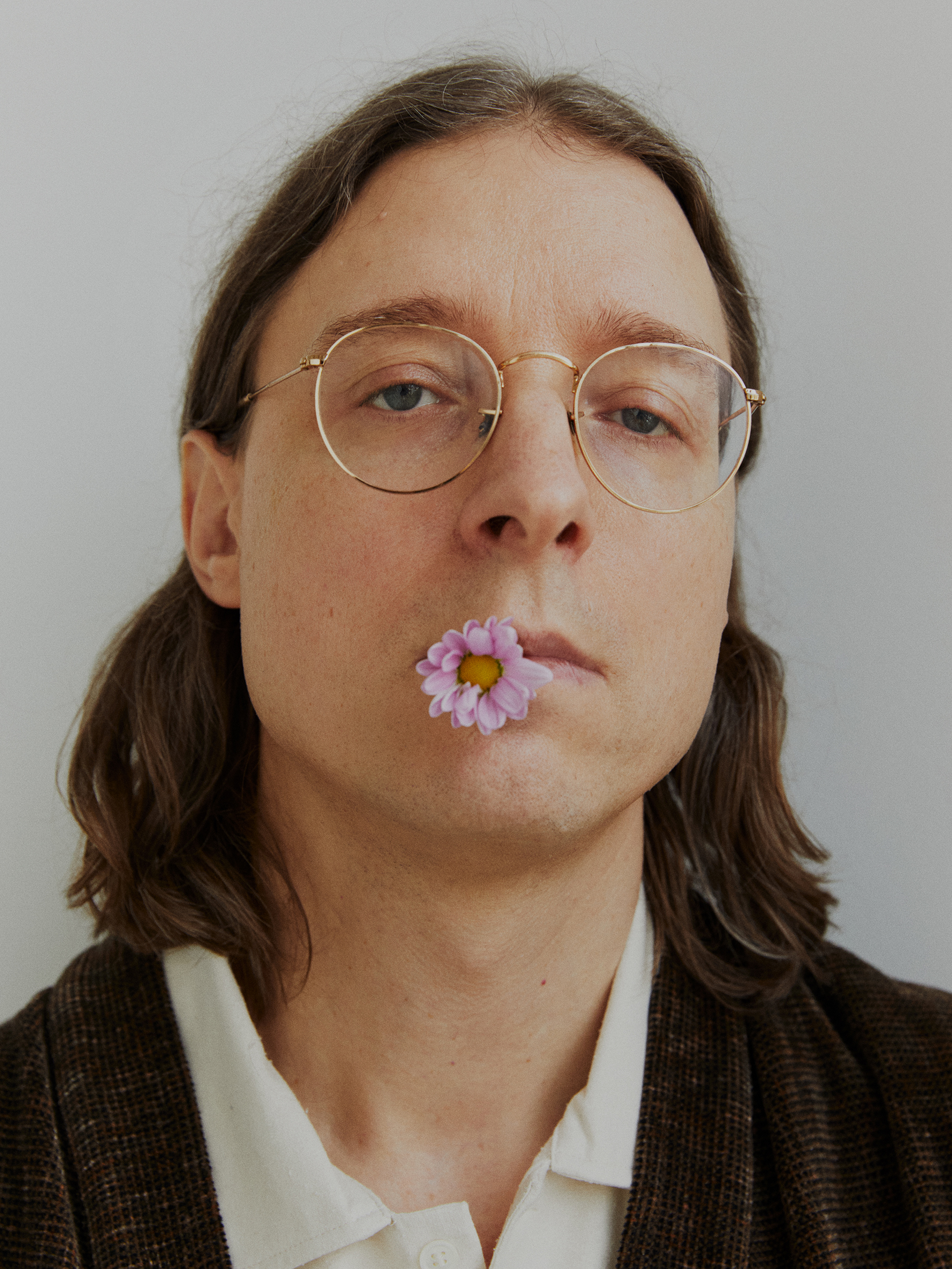
Summer is just around the corner, and we can’t think of a better way to welcome it than with Kasper Bjørke’s Puzzles, a dreamy, carefree slice of sun-dappled disco-pop that’s best enjoyed with a cold beer in hand.
Featuring guest spots from a cast of friends and collaborators that includes Woolfy of DFA Records and Icelandic folksters Sísí Ey, the project finds Bjørke departing from his typically DAW-focused workflow to play and record the majority of instruments on the record live, a decision reflected in the dynamism and spontaneity of its sound.
Though the glitter of the disco ball has long shined on Bjørke’s work, the shape-shifting Copenhagenite has inhabited more than a few creative guises throughout his two decades in the game, from the angular synth-pop of his 2007 debut through to the critically acclaimed Fifty Eleven PrThoject, a sweeping, synth-laced neo-classical epic that made evident the extent of Bjørke’s talents as both musician and producer.
Puzzles, though, couldn’t be more different in style from that project’s brooding ambience; loose, limber and prizing groove above all else, it sounds more than anything else like Bjørke simply having fun.
We caught up with the producer to find out more about the making of the record and he was kind enough to leave us with three production tips.
When did you start making music, and how did you first get started?
“I started making music in 1998 with a friend of mine. We started on an Akai S01 sampler with a floppy disc and an Atari computer that had one of the earliest versions of Cubase installed. It was a super small lo-fi bedroom setup.
“We started out sampling old disco records, heavily inspired by Masters At Work and the whole New York soulful disco house sound at that time - as well as the whole French wave, including Daft Punk, DJ Falcon, Etienne de Crecy, Cassius, Motorbass, etc.”
Tell us about your studio/set-up.
“After having several studios away from my home, I have had a home studio for the past 14 years or so. I feel it is the most inspiring and flexible choice for me and we have a very large apartment so I have a room just for my studio. I use both plugins and hardware in my relatively small setup, but I often rent/use other studios for live sessions with various musicians, which is a big part of my production process.
“If anything, I would like an old analogue mixing desk - but then again, I'm happy with how my projects are sounding when mixing using various UAD plugins. I stem master with some of the best in the game, Stefan Lopazz in Germany, Joel Krozer at Six Bit Deep in Copenhagen and Taylor Deupree at 12K Mastering in the US - who all use the best outboard gear to get that last analogue warmth into my projects.
In my own studio I have some of my all time favourite and go-to synths, for example the Roland SH-101, D-50 and Juno-60
“In my own studio I have some of my all time favourite and go-to synths, for example the Roland SH-101, D-50 and Juno-60. I also have stuff I rarely use like the Doepfer Dark Energy and the Elektron Analog Four mk1, and I often use Arturia and Korg soft synths like the Arp Odyssey.
“Honestly, I love my setup, but I do occasionally wish that I had a bigger space with much more equipment. On the other hand, I would lose the flexibility of having my studio at home, and in the end that’s more important to me than having a ton of hardware that I would most likely rarely use.
“I feel like I’ve always done my best work not because of a certain piece of gear but because of a unexplainable burst of creativity that occurred in a moment in time, and I am also lucky enough to know some very gifted musicians who I have been working with for many years in their studios, where I feel just as home as in my own.”
What DAW (or DAWs) do you use, and why did you choose it?
“I’ve been working in Logic since version 4.7 came out in 2001. After both Cubase and Pro Tools I found that Logic has the best of both worlds for me personally, in terms of audio editing and MIDI programming. I guess if I wasn’t so deeply into Logic I would switch to Ableton, but at this point I don’t really see the reason.”
What one piece of gear in your studio could you not do without, and why?
“My Adam A7 speakers. I haven’t found another pair of speakers that I trust as much - and I don't need to blast music so loud. I use my Japanese Phonon headphones for reference and really like how they sound.”
What's the latest addition to your studio?
“I bought a Würlitzer 200 electric piano from 1968 around a year ago. I always wanted to get one for myself. The sound of a Wurli always makes my heart melt - and it’s also great for the kids to learn how to play the piano too! In terms of plugins I recently got the Arturia Pigments synthesizer and so far I’ve been enjoying it, especially for sound design.”

What dream bit of gear would you love to have in your studio?
“I would love to have a Moog synthesizer, as I have never owned one. Maybe a Model 10. I’ve never really immersed myself in modular synthesis but I’m intrigued to really dig into it with this one, and I’ve tried it a few times in one of my friends' studios.”
When approaching a new track or project, where do you start?
“When working on a beat-driven project, usually I work within the DAW from the beginning with an idea in my head for a chord progression, a synth theme or a bassline. I quickly build a drum pattern and work my way up from there. I often pull in a bassist or guitarist for a session and sample stuff from that - or I visit another studio to record, for example, saxophone or percussion. Then I take the stems back to my studio and edit, produce and mix.
Puzzles is the first project where I have gone into the studio with a drummer
“If it’s an ambient project it’s much more about live jam sessions on various synths and effect pedals as a starting point. Usually I record in my good friend’s studio - he has a brilliant setup for these kind of sessions, with the Oberheim OB-8, Minimoog Model D, a Buchla and an ARP 2600 etc, plus effects like Roland Space Echo and Eventide Blackhole.
“We then record multi-track into Logic as one-take jams - and I then take these projects back to my studio where I work further with the stems, arranging and mixing, before doing more recording sessions for strings, piano, choir etc, that I arrange and add on top of the synths.”
Tell us about how you approached the production on your new project. Did you experiment with any new techniques or methods?
“Yes! My new album Puzzles is the first project where I have gone into the studio with a drummer, the Danish musician and artist Rasmus Littauer (aka School of X), to recreate my programmed drum patterns on the entire album. This also meant using the kick and the snare. I've used live hi-hat patterns, toms and percussion on several projects before - but never the kick and snare!
I always felt live drums didn't really sound good enough and have the punch that I wanted
“I have always used my own programmed sampled drum sounds, because I always felt live drums didn't really sound good enough and have the punch that I wanted. But on this record I wanted a live feeling throughout the production and was not aiming to do a club album anyway, so I set out to use the entire kit from the beginning, and I am very happy with the result.
“We recorded all tracks in one-takes, and hardly anything was quantized afterwards. This obviously only worked out because Rasmus Littauer is a brilliant and super tight drummer and since he has a super nice set-up in his studio - his drum kit, mics the chain of plugins he has set up in his DAW makes it very intuitive to go in and record in this way.
“I took all the stems from our recording session back into my Logic projects and could easily work with them from there. I then had recording sessions with other musicians as well and built the final result this way, replacing soft synths and making a very analogue and live-sounding album.”

Tell us about one artist or track that’s inspired you the most as a producer and musician?
“I think it’s a tie between James Murphy and Daft Punk. Daft Punk changed my life with Homework in the mid-’90s, and then in the early 2000s James Murphy and DFA Records did it again when releasing Losing My Edge on 12”. His production work for The Rapture on Echoes sounded fantastic. They really revolutionised dance music in so many ways and I guess I wouldn’t be doing what I’m doing if it wasn’t for them.”
What are you currently working on?
“Right now I'm trying to find time to rework some of the songs from Puzzles to release a remix EP. I’m also working on compiling a compilation for my ambient imprint Sensitive Records, which I started last year. I also have some new collaboration projects in the pipeline; an EP together with my friend Prom Night and also a follow-up to the EP I recently released on the Japanese label Mule Musiq with my friend El Agua Es Profunda.”
Kasper Bjørke's production tips
1. Use overdrive on your snare and toms
“I always add Logic’s own overdrive plugin to my snare and tom samples. It's a fast and easy way to give it width and presence. Just set the drive to 6db and turn it all the way up to 20k Hz.”
2. Panning double-tracked lead vocals
“During a vocal recording session, take the final single track lead vocal and ask the vocalist to dub it. Once the dub has been recorded and the two takes align perfectly, pan them all the way to 64 L and R. This creates a natural stereo chorus effect and a lot of body to the lead. I like to use that technique especially on male vocals and falsettos.”
3. Add sub bass under your soft synth bass for extra depth
“Sometimes a soft synth bass sound doesnt have enough depth on the lower end around 25-80 Hz, and even though you EQ it, it still doesn’t have the right depth. I then find it useful to add a basic clean sine to get that boost in the lower end. Sidechaining it with the kick is essential so it doesn’t get muddy!”







